As we enter 2025, the economic backdrop provides reasons for optimism across asset classes. Inflationary pressures have eased, enabling the Federal Reserve to pivot toward a more accommodative stance, which supports growth in housing, business investment, and corporate earnings. U.S. equities are poised for another strong year, with gains expected to broaden across sectors and market capitalizations. Meanwhile, fixed income markets, in our view remain active— offering potential opportunities for both income and total return. In our view, investors who remain disciplined and diversified should be well-positioned to navigate market challenges and capitalize on opportunities in the year ahead.
NOTE: The following commentary is provided for informational purposes only and should not be construed as investment advice. The opinions and forecasts reflect the research, subjective judgments, and assumptions of the commentator and are not a guarantee of future results.

Economic Overview
The outlook for 2025 in our view is decidedly bullish for the U.S. economy and equities. Progress on reducing inflationary pressures allowed the Federal Reserve (the Fed) to begin to ease its foot off the brakes of the U.S. economy in late 2024. We expect the Fed to maintain its focus on both parts of its dual mandate: achieving full employment while keeping inflation in check. This suggests that further rate cuts could come in 2025 if inflation continues to moderate toward the Fed’s 2% target.
With borrowing and financing costs easing, we look for a rebound in new and existing home sales as many would-be homeowners have been priced out of the market by high mortgage rates. An upturn in home sales would also benefit other sectors due to knock-on demand for household furnishings, appliances, and landscaping as well as demand for the labor services required to outfit these homes.
We expect to see resilience in business fixed investment demand as the lighter regulatory touch expected of the incoming Trump Administration could allow for faster uptake of technologies and less red tape for business innovation and expansion. Although tariff policy and the impact of those higher taxes on consumption and inflation are a concern, we believe further review and feedback from Congress and business leaders may temper some of the promises made on the campaign trail.
In 2024 the equity market was led higher by cyclical sectors, and in particular from strong gains in the communications services, technology, consumer discretionary and financial sectors. We expect those stocks to continue to do well even as gains broaden to other sectors (such as industrials) and to small- and mid-cap stocks. We believe that artificial intelligence could benefit companies in all eleven sectors to better serve the needs of business and customers. We continue to favor U.S. equities while maintaining meaningful exposure to foreign developed and emerging market indexes.
Against that economic and interest rate backdrop, we expect corporate revenues and earnings to continue to grow over the course of 2025. We expect earnings for the S&P 500 companies to reach $275/share, 10% higher than the $250 figure we expected for 2024. Based on our assumption of a P/E multiple of 25.8x, that puts our year-end price target for the S&P 500 at $7100, about 17% higher from its closing level of $6090 on Dec. 6, 2024.1
Markets don’t move up in a straight line and setbacks are likely, but those with patience and perseverance should see gains over the intermediate and long term.

Research Perspective
Entering 2025, OAM Research continues to stress the need for diversification in portfolios. The trajectory of the economy, coupled with policy direction from the new administration, are likely to contribute to elevated market volatility and increased dispersion across asset classes.
U.S. equity valuations remain extended on a historical basis, but this premium is primarily driven by a handful of mega-cap growth stocks that have outperformed. However, we see the potential for broader market leadership in 2025, which could present the potential for opportunities in areas like large-cap value and small-cap equities. We believe skilled, active managers – using both long-only and long/short strategies – may be well-positioned seek to navigate these shifts. International developed and emerging market equities face headwinds from slowing global growth and the potential for higher tariffs. However, depressed valuations may already reflect these risks. We believe international stocks are positioned to benefit from mean reversion in 2025.
Interest rates remain elevated even as the Fed continues its cutting cycle, and the total return outlook for core fixed income, in our view, appears to be favorable. We also believe investors can take advantage of high current yields on investment grade bonds while benefiting from capital appreciation as the Fed likely lowers rates in 2025. High yield credit spreads are historically tight and don’t appear to adequately reflect potential risks, therefore OAM Research recommends a higher quality bias in fixed income portfolios. Investors searching for more yield may consider allocating to experienced managers within the private credit space, where yields remain attractive.*
OAM Research believes that diversifying strategies will continue to play an important role in portfolio construction. Real assets, given their objective of yield, inflation protection, and defensive characteristics, are likely to remain in favor. Event driven strategies such as merger arbitrage seek to continue to deliver diversification benefits, and the potential for renewed M&A activity stemming from less regulation could catalyze more opportunities, in our view.**

Fixed Income and Municipal Commentary
Economic developments in the fourth quarter of 2024 have tipped the scales against the Fed continuing to ease at an accelerated pace as they did at their September meeting.
October’s CPI rose a little more than expected, and retail sales were better than expected, too. Real GDP grew at a solid 2.8% annual rate in the third quarter fueled by strong consumption and strong capital equipment spending, all accompanied by inflation sliding back toward 2%. Subsequently, Fed members are still pointing to rate cuts, but at a slower pace.
Economic data may be noisy due to effects from Hurricanes Helene and Milton, nonetheless, we believe data will still support our long-held view that the U.S. economy remains resilient. Our view remains one of a soft landing for the economy where the unemployment rates moves slightly higher, but ends up below 5% in this business cycle.
Despite peak economic growth and interest rates behind us for this cycle, fixed-income remains an attractive asset class into 2025. As the Fed continues its gradual rate-cutting cycle, the Federal Reserve benchmark interest rate is still at its 18 year highs
Fixed income credit remains in demand as strong technical factors are still in the driver’s seat as supply has eased off the earlier record pace and equities are at all-time highs. The core driver for this demand is simply attractive all-in yields and so it is unlikely to subside even as spreads move to levels that are near all-time tights.
Although corporate spread remains tight, our taxable team sees strong potential in sectors like bank and finance companies, which have the potential to benefit from a steeper yield curve.
There are no positions in the portfolio with any credit or sustainability concerns through the market cycle, in our view. Capital preservation continues to be our foremost priority followed by providing income.
As long-term investors, we continue to position portfolios to be dependable components of an overall asset allocation. We remain focused on seeking to produce income, not over-reaching for yield, and taking advantage of opportunities presented by the market.
If you have questions about our 2025 Outlook, reach out to your Oppenheimer financial advisor, who can discuss how the market landscape may affect your investments.
As a follow up to our house views, we reached out to some of our discovered managers to gain their perspective going into 2025, see the Manager Perspectives below.
Manager Perspectives
Large/All-Cap
The ACR investment team continues to be concerned with overall U.S. market valuations. We estimate the S&P 500 is selling at 43x trailing cyclically adjusted earnings. The risk of subpar returns at some point is therefore, in our opinion, high. Additionally, we believe it is possible price momentum from economic growth and innovations such as AI could produce strong market gains this year.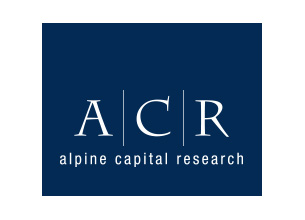
Large/All-Cap
We continue to believe that the overall market offers an unattractive risk/reward as valuations remain extended and the economy is structurally challenged. Importantly, in our view, tail risks including geopolitical uncertainty and unsustainably high deficits are elevated. At the same time, we think opportunities for stock-picking are strong, both on the long and short side.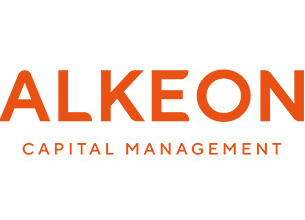
Large/All-Cap
The Russell 1000 Growth posted an average annualized return of nearly 38% the last two years, the highest two year return since the late 90s Tech Bubble. More moderate returns are likely going forward. The fourth quarter of 2024 ended this two year run with a historic rally in low quality and continued concentration in the Magnificent 7. Potential tariffs and geopolitical uncertainty could lead to continued volatility, and 2025 will likely be the year the market broadens.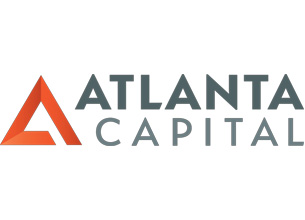
Large/All-Cap
While volatility is likely to persist in the coming months, particularly as the world awaits further updates from the Fed and new administration’s agenda, we maintain our bullish outlook for the companies that are enabling the energy transition and supplying the infrastructure to meet rising electricity demand.
Large/All-Cap
Mega-cap growth stocks have dominated since 2022, but 2025 may mark the end of this historic outperformance. Over the last decade, the S&P 500’s gains stemmed from multiple expansions, not faster earnings growth relative to the S&P 500 Equal Weight. With stretched valuations reminiscent of the late 1990s, we believe a reversion appears inevitable. While the timing is uncertain, prior cycles suggest such trends lose steam after two years.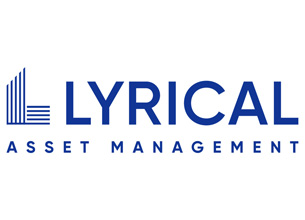
Large/All-Cap
In our view, stock valuations have become stretched, with most measures ranking above the 90th percentile relative to recent history. Moreover, the concentration of market cap in the top few positions is at record levels, and while this poses a risk for index-based investors, we believe significant opportunities may exist to outperform index-based strategies in 2025.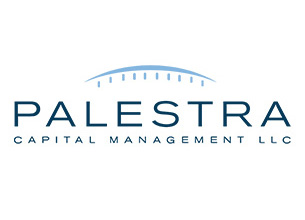
Small/Mid Cap
The incoming administration’s pro-business policies, including reshoring, tax cuts, tariff protections, and reduced regulation, are expected to support small-cap companies. These benefits were visible in the one day returns of the Russell 2000 (+6%) versus the S&P 500 (+3%) on the day after the presidential election. While higher labor costs and inflation risks remain, the market appears to be embracing small caps for their economic sensitivity and the fact that the valuations of small caps are low in comparison to large caps – especially mega caps.
Small/Mid Cap
We continue to believe there is a long-term opportunity for small cap equities relative to large caps, which are trading at their highest valuation premium in 25 years. We believe valuation is a good long-term indicator, and the fundamental backdrop for small cap earnings growth is increasingly favorable – supported by the strengthening U.S. economy, a lower rate environment, improving small business optimism, combined with an environment of deregulation and clarity on tax policy. However, immigration and tariff policies could offset gains. In our view, profitable, well-capitalized companies are best positioned to benefit as market participation expands beyond mega-cap dominance.
International
We believe non-U.S. markets, trading at historic valuation discounts to the U.S., offer significant upside potential in 2025. Europe, in particular, could benefit from reduced energy prices, corporate investment rebounds, and a potential resolution to the Ukraine conflict. Enterprise adoption of generative AI should drive IT services demand and accelerate growth in advanced processors and memory.
International
Central bank updates signaled that monetary policy remains on an easing path, but the pace of rate cuts may be slower or shallower than recently predicted. The Fed has led the way in this regard amid persistent inflation concerns, with its forecast of just two rate cuts in 2025. Additionally, following the presidential election, there has been a growing focus on trade policies and election pledges, which many have viewed as inflationary and possibly leading to higher-for-longer rates. U.S. equities substantially outperformed international equities given this backdrop during the fourth quarter.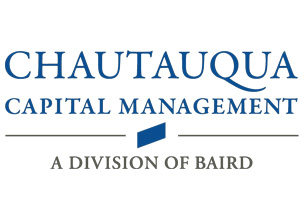
Fixed Income
While traditional banks and lenders continue to face balance sheet issues and are limited in their ability to provide capital, we believe this should result in attractive ongoing opportunities for private credit managers in 2025. We expect the Fed will seek to slowly reduce interest rates while the Trump administration’s policies should support corporate earnings and the economy, providing tailwinds for credit quality. While elevated inflation risk remains, we believe asset-based lending should outperform given enhanced current yield and the security of cash flowing assets.
Diversifying
We expect continuing strong performance from private equity-backed companies, as most of these companies are adapting well to the challenge of higher interest rates. Additionally, we anticipate continuing increases in M&A activity, especially in the middle market, with our pipeline today being meaningfully stronger than it was a year ago. We also believe that investors are well served to focus on resilient strategies designed to perform well across a wide range of scenarios.
Diversifying
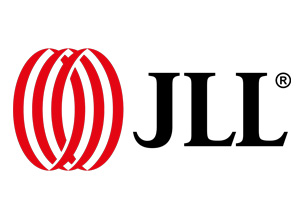
Diversifying
As we step into 2025, we believe the M&A landscape is set for a remarkable transformation driven by newfound political and economic stability. The decisive pro-business outcome in the U.S. elections has instilled confidence among businesses and investors, fostering a more predictable and welcoming environment for mergers and acquisitions. With interest rates and inflation projected to decline, we believe the financial landscape is becoming increasingly favorable for transaction activity, encouraging more businesses to pursue M&A opportunities. In our view, pro-business initiatives, such as corporate tax cuts and streamlined regulatory processes, are expected to further enhance the M&A climate.
Fixed Income
Interest rates continue to play a major role in shaping public markets. Listed real assets like REITs and infrastructure are poised to benefit from stable or falling rates, as they did in Q3 2024 when they outperformed broader equities by a wide margin. Looking ahead, the strong U.S. economy and inflation concerns from the new administration have raised expectations for higher interest rates to stick around longer. While this has slowed recent gains, falling inflation, attractive valuations, and stronger fundamentals could set the stage for these assets to perform well in 2025. REITs appear to be early cycle and may benefit from trends like growing demand for data centers, improving supply in areas like multi-family housing, and a soft landing for the economy. Meanwhile, infrastructure offers steady, inflation-resistant returns and stands to gain from the rising need for more power driven by advancements like artificial intelligence.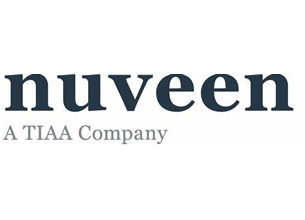
Diversifying
We are optimistic about the merger arbitrage landscape in 2025 due to an anticipated pro-business environment and regulatory reforms, which are likely to provide process clarity, thereby boosting deal flow and instilling confidence in dealmakers. Additionally, we believe market inefficiencies and mispriced risks, amid the continuation of attractive spreads, may create opportunities for investors.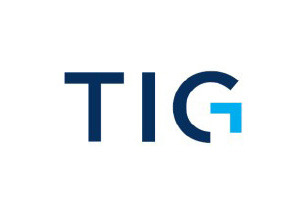
Disclosures
* Private credit risks include limited liquidity and defaults.
** Risks include that risks, which include that real assets can be affected by fluctuating market conditions and illiquidity, and event-driven strategies face deal-specific risks and uncertainties related to regulatory changes, which can impact outcomes and returns.
1 Reaching an S&P 500 price target involves several risks, including: Market Volatility: Geopolitical events, interest rate changes, and unexpected economic data can lead to sudden market shifts; Earnings Uncertainty: Corporate earnings may fall short of expectations due to weakening demand or rising costs; Macroeconomic Risks: Recession fears, inflation, or unemployment trends can alter investor sentiment; Sector Performance: Underperformance in key sectors, like technology or financials, may hinder index growth; External Shocks: Natural disasters, geopolitical conflicts, or global pandemics can disrupt markets. Investors should recognize these risks as they may delay or derail the attainment of a
This material is intended to be of general interest only and should not be construed as individual investment advice or a recommendation or solicitation to buy, sell or hold any security or to adopt any investment strategy. It does not constitute legal or tax advice. This material may not be reproduced, distributed or published without prior written permission from Oppenheimer Asset Management (OAM). The views expressed are those of the respective author and the comments, opinions and analyses are rendered as at publication date and may change without notice. The underlying assumptions and these views are subject to change based on market and other conditions and may differ from other portfolio managers or of the firm as a whole. The information provided in this material is not intended as a complete analysis of every material fact regarding any country, region or market. There is no assurance that any prediction, projection or forecast on the economy, stock market, bond market or the economic trends of the markets will be realized. The value of investments and the income from them can go down as well as up and you may not get back the full amount that you invested. Past performance is not necessarily indicative nor a guarantee of future performance. Asset allocation and diversification may not protect against market risk, loss of principal or volatility of returns. All investments involve risks, including possible loss of principal.
Risk factors specific to certain asset classes include:
Small Cap Risk: While small-cap companies have a lot of growth potential, they have equal potential to fail. Small-cap stocks are a riskier investment than large-cap stocks. The companies usually have less access to investment capital and are more sensitive to market changes. Foreign Security Risk: Investment in foreign securities are affected by risk factors generally not thought to be present in the US. The factors include, but are not limited to, the following: less public information about issuers of foreign securities and less governmental regulation and supervision over the issuance and trading of securities. International investments may involve risk of capital loss from unfavorable fluctuation in currency values, from differences in generally accepted accounting principles or from economic or political instability in other nations. Fixed Income Risk: The risks associated with investing in fixed income include risks related to interest rate movements as the price of these securities will decrease as interest rates rise (interest rate risk and reinvestment risk), the risk of credit quality deterioration which is an issuer will not be able to make principal and interest payments on time (credit or default risk), and liquidity risk (the risk of not being able to buy or sell investments quickly for a price that is close to the true underlying value of the asset). High Yield Fixed Income Risk: High yield fixed income securities are considered to be speculative and involve a substantial risk of default. Adverse changes in economic conditions or developments regarding the issuer are more likely to cause price volatility for issuers of high yield debt than would be the case for issuers of higher grade debt securities. Diversifying Strategies Risk: The risks associated with investing in diversifying strategies include risks related to the potential use of leverage, hedging strategies, short sales and derivative transactions, which may result in significant losses; concentration risk and potential lack of diversification; potential lack of liquidity; and the potential for fees and expenses to offset profits. Merger-arbitrage & Event-driven strategies involve the additional risk that the portfolio manager’s evaluation of the outcome of a proposed event, whether it be a merger, reorganization, regulatory issue, or other event, will prove incorrect and the strategy will suffer losses.
Please note that a company’s history of paying dividends is not a guarantee of such payments in the future. Companies may suspend their dividends for a variety of reasons, including adverse financial results.
Index definition:
The Russell 1000 Growth Index measures the performance of those Russell 1000 companies with higher price-to-book ratios and higher forecasted growth values
The performance of a benchmark index is not indicative of the performance of any particular investment; however, they are considered representative of their respective market segments. Please note that indexes are unmanaged and their returns do not take into account any of the costs associated with buying and selling individual securities. Individuals cannot invest directly in an index.
This material is not a recommendation as defined in Regulation Best Interest adopted by the Securities and Exchange Commission. It is provided to you after you have received Form CRS, Regulation Best Interest disclosure and other materials.
Oppenheimer Asset Management is the name under which Oppenheimer Asset Management Inc. (OAM) does business. OAM is a registered
investment adviser and is an indirect wholly owned subsidiary of Oppenheimer Holdings Inc., which also indirectly wholly owns Oppenheimer & Co. Inc.
(“Oppenheimer”), a registered investment adviser and broker dealer.
© 2025 Oppenheimer & Co. Inc. Transacts Business on All Principal Exchanges and Member SIPC. All rights reserved. No part of this brochure may be reproduced in any manner without the written permission of Oppenheimer. 7483194.1

